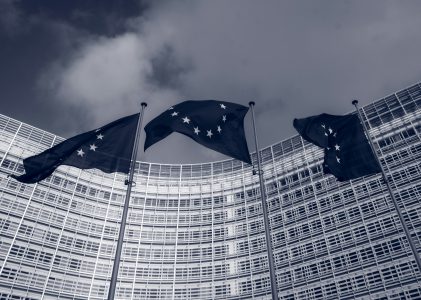
Introduction
Ireland has a rich legacy of contributing to global development, spanning from its faith-based missionary work in the past to its contemporary efforts in advocacy and policy development. This assignment offered a chance to explore Ireland’s evolving role in global development while gaining hands-on experience in the art of interviewing—a critical skill for both professional and academic communication.
For this project, I interviewed two individuals who embody Ireland’s development journey. The first was a retired Irish missionary with decades of experience working in developing countries. The mid-twentieth century, between 1920 and 1970, was the ‘golden era’ for Irish missionaries as more than 30,000 Irish men and women joined missionary orders and went overseas to work in developing countries across the globe.
The second was an Advocacy Officer working in the EU on global development policies. These two perspectives provided a fascinating contrast between Ireland’s historical and modern approaches to global development.
Three Questions
- What inspired you to pursue a career in your field?
- As a former missionary/ an Advocacy Officer, what did/does your work entail?
- In your opinion, what lessons from Ireland’s faith-based development history can be applied to today’s work in developing countries?
These questions were designed to elicit insights into personal motivations, professional experiences, and reflections on Ireland’s development legacy. They allowed for a comparative analysis of the two perspectives while ensuring flexibility for follow-up questions and tangential discussion.
Making Contact
Establishing contact with my interviewees required organisation, persistence and some networking. For the retired missionary, I reached out to a charity that supports Irish missionaries. This process was delayed due to limited office hours, but once connected, the organization was very helpful in recommending a suitable candidate. We quickly arranged a Zoom call for the following day.
Finding the Advocacy Officer proved more challenging, as I had no direct contacts in that field. After spreading the word among friends and family, a distant acquaintance who works in development was recommended. He lives in Brussels but happened to be visiting Ireland in the coming weeks to vote in the general election at the end of November. We connected via WhatsApp and agreed to meet in a pub for the interview.
Rapport During the Interviews
The rapport differed significantly between the two interviews. The Zoom interview with the missionary was friendly and informative but somewhat hindered by technical issues, including a poor internet connection. As Irvine et al. (2013) highlight, the absence of visual cues in remote interviews can affect interaction, including the ability to read body language and facial expressions. This limitation made it harder to gauge her reactions and adjust the flow of the conversation. However, her openness and enthusiasm helped maintain a positive atmosphere.
The in-person interview with the Advocacy Officer was more natural and conversational. The relaxed setting of the pub, combined with a mutual acquaintance, fostered an easy rapport. The physical setting allowed for ‘symbolic exchanges’ (Chapple, 1999: 90)), such as sharing drinks, which enhanced the sense of connection. However, this casual environment also posed challenges, such as balancing informal conversation with the need to steer the discussion toward the interview questions about his career. I waited for a natural lull in our conversation before asking the interview questions. The in-person interview lent itself to more natural tangents which gave me a much fuller understanding of his work as an advocacy officer and overall, made for a better interview.
Differences Between the Two Interviews
The Zoom interview was structured and efficient. Having my notes and questions visible on-screen allowed me to stay focused and keep the interview on track. However, the lack of physical presence meant there were fewer opportunities for spontaneous interaction or visual cues, which could have enriched the conversation.
The face-to-face interview felt more dynamic and engaging. The natural flow of conversation allowed for deeper insights, as the interviewee often went on tangents that provided valuable context. However, the casual setting occasionally made it challenging to transition smoothly between topics, and distractions in the pub environment required extra effort to maintain focus.
Personal Learning and Reflection
This exercise offered valuable lessons in interviewing as both a method and an art.
Building Rapport:
Establishing trust and rapport is essential for eliciting meaningful responses. While the Zoom interview was professional, I realized the importance of overcoming technological barriers to foster a more personal connection. The in-person interview demonstrated the power of shared context and informal exchanges in creating a comfortable atmosphere.
Preparation:
Crafting open-ended questions and researching the interviewees’ backgrounds beforehand helped me feel confident and prepared. However, I also learned the importance of flexibility, as both interviews went in unexpected directions that led to valuable insights.
Adapting to Context:
Each interview format has strengths and limitations. Zoom interviews are efficient and practical, especially for geographically distant participants, but they lack the richness of in-person interactions. Face-to-face interviews, while more engaging, require careful navigation of environmental distractions and conversational tangents.
Application to Professional and Academic Practices:
As someone studying Communications for Development, I recognize the centrality of effective interviewing in gathering qualitative data, building narratives, and fostering mutual understanding. This experience honed my ability to conduct interviews that balance structure with adaptability—a skill that will be invaluable in future research and professional work.
Conclusion
Through this assignment, I gained a deeper understanding of Ireland’s historical and contemporary roles in global development and enhanced my skills in interviewing as a research method. Hearing the contrasting experiences of a retired missionary and a modern Advocacy Officer highlighted the transition from faith-based missions to advocacy-driven approaches, showcasing how Ireland’s development work has adapted over time. Additionally, the practical experience of conducting both Zoom and in-person interviews highlighted the nuances of these methods. Each format had its strengths, and navigating their challenges helped me improve my communication and adaptability as an interviewer. Overall, this experience has deepened my understanding of Ireland’s contributions to development work as well as enriched my academic and professional work for future ComDev initiatives.
References
Chapple A (1999) The use of telephone interviewing for qualitative research. Nurse Researcher
6(3): 85–93
Drew, P., Irvine, A., & Sainsbury, R. (2012). “Am I not answering your questions properly?” Clarification, Adequacy, and Responsiveness in Semi-structured Telephone and Face-to-face interviews. Qualitative Research, 13(1), 87–106. SAGE Publications.

